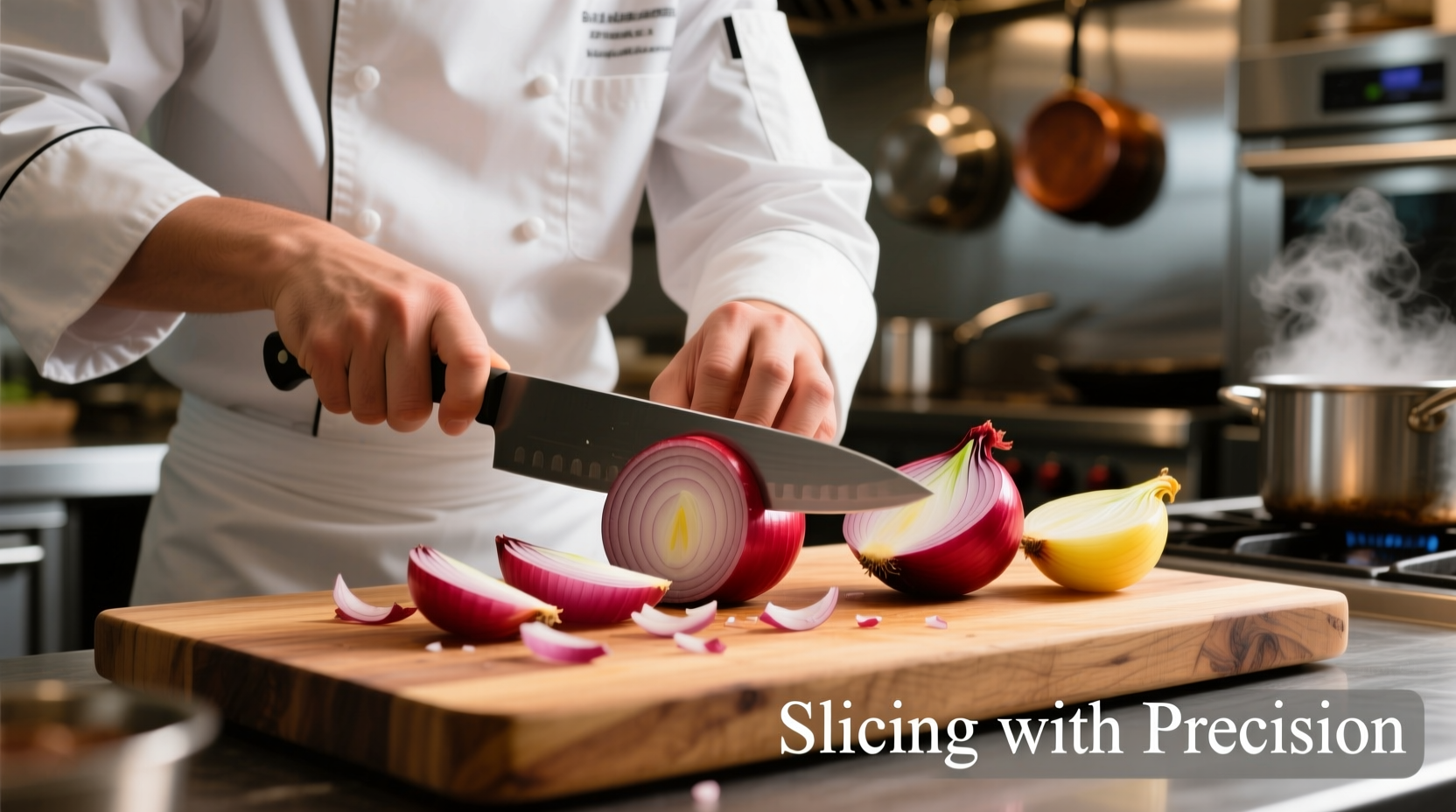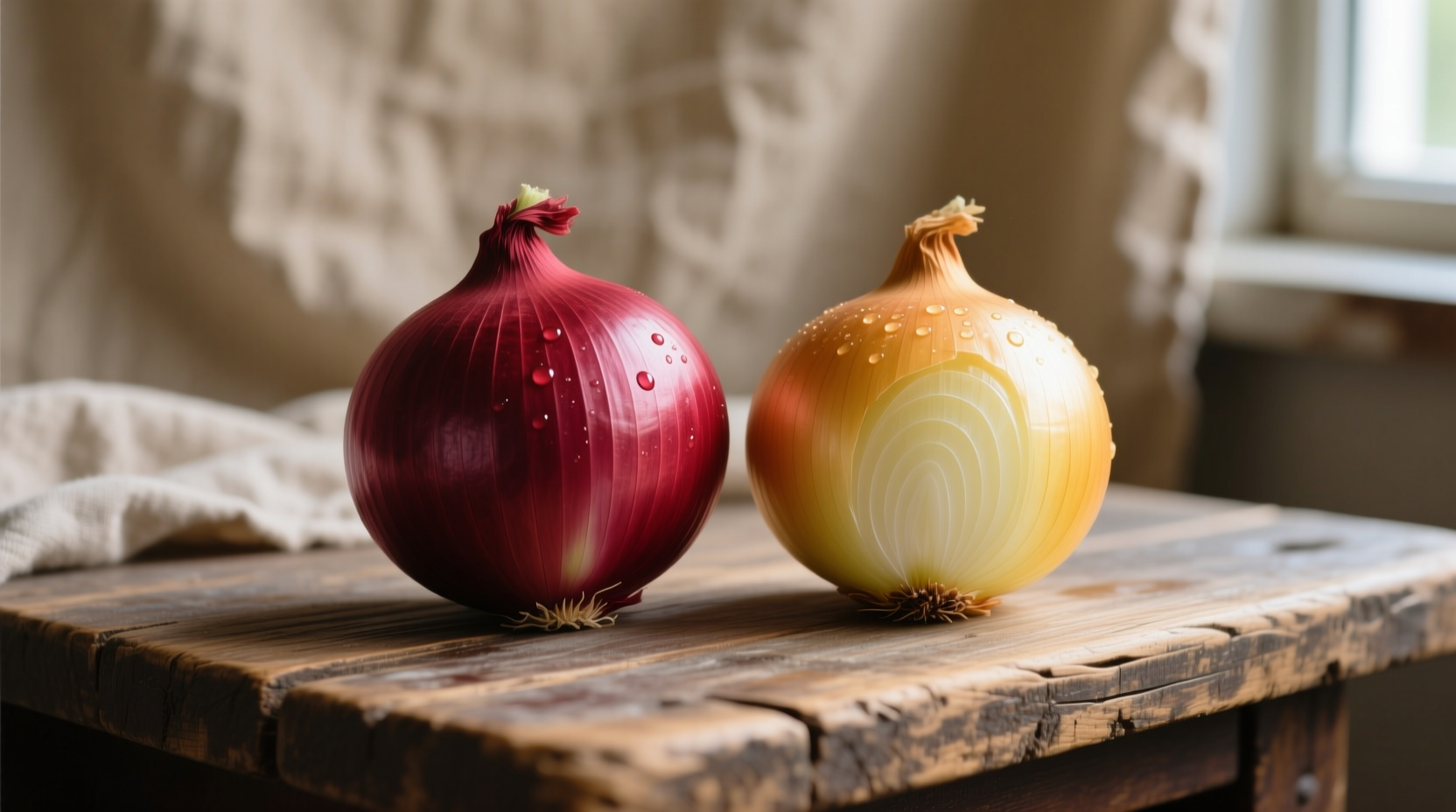Choosing between red and yellow onions can make or break your dish. As a professional chef with years of experience analyzing flavor chemistry, I've seen how this simple decision impacts everything from salad freshness to sauce depth. Let's explore exactly when to reach for each variety and why your recipes will thank you for making the right choice.
Understanding Onion Flavor Chemistry
Onions contain sulfur compounds that determine their flavor profile. Yellow onions have higher concentrations of these compounds, creating that characteristic pungency that transforms into rich sweetness when cooked. Red onions contain anthocyanins (the same antioxidants in blueberries) that give them their color and a slightly different flavor profile with less sulfur intensity.
| Characteristic | Red Onion | Yellow Onion |
|---|---|---|
| Flavor (raw) | Sharp, peppery, slightly sweet | Strong, pungent, more acidic |
| Flavor (cooked) | Mild, subtle sweetness | Rich, deep caramelized sweetness |
| Best for raw applications | ★★★★★ | ★★★☆☆ |
| Best for cooking | ★★☆☆☆ | ★★★★★ |
| Storage life | 2-3 weeks refrigerated | 2-3 months at room temperature |
Raw Application Scenarios
When your recipe calls for raw onions, red onions shine. Their vibrant color adds visual appeal to salads, salsas, and sandwiches without overwhelming other ingredients. The slightly milder bite works perfectly in:
- Greek salads where their color complements tomatoes and feta
- Fresh pico de gallo that maintains bright flavor without excessive sharpness
- Burgers and sandwiches where you want onion presence without harshness
- Pickled onions that transform into beautiful pink-purple garnishes
According to research from the University of California's Agriculture and Natural Resources department, red onions contain 10-15% more antioxidants than yellow varieties, making them particularly beneficial in raw preparations where these compounds remain intact. Their anthocyanin content provides both visual appeal and health benefits that yellow onions lack.

Cooking Performance Comparison
For cooked applications, yellow onions are the undisputed champion. Their higher sugar content (approximately 4-5% compared to red onions' 3-4%) creates superior caramelization. When making French onion soup, mirepoix, or any dish requiring cooked onions, yellow onions deliver:
- Deeper, richer flavor development during cooking
- Better texture retention in long-simmered dishes
- Superior browning without burning
- More balanced flavor integration with other ingredients
The USDA National Nutrient Database confirms that both varieties contain similar nutritional profiles when cooked, but yellow onions develop more complex flavor compounds during the Maillard reaction due to their specific sugar composition. Professional chefs at the Culinary Institute of America consistently recommend yellow onions for 90% of cooked applications because of their predictable performance and flavor transformation.
When Substitutions Work (and When They Don't)
Understanding substitution possibilities prevents recipe disasters. While you can sometimes swap these varieties, certain applications demand specificity:
Safe substitutions:
- Using red onions in cooked sauces where appearance doesn't matter
- Using yellow onions in cooked salsas or relishes
- Substituting red for yellow in small quantities in soups and stews
Avoid substitutions when:
- Appearance matters (red onions turn blue-green in alkaline environments)
- Maximum caramelization is required (yellow onions outperform significantly)
- Raw applications need specific color contrast (red provides visual pop)
- Recipes specify one variety for chemical reasons (like pickling)
Storage Secrets for Maximum Freshness
Proper storage dramatically extends onion shelf life. The FDA's food safety guidelines recommend storing yellow onions in a cool, dry, well-ventilated place away from potatoes (which emit gases that accelerate spoilage). Yellow onions typically last 2-3 months under these conditions.
Red onions, with their higher moisture content, require refrigeration after cutting and last only 2-3 weeks even when whole. The University of Minnesota Extension notes that red onions lose their crisp texture faster than yellow varieties when stored at room temperature, making refrigeration essential for maintaining quality.
Professional Kitchen Tips You Can Use
Adopt these chef-tested techniques to maximize onion performance in your cooking:
- Reduce red onion sharpness: Soak sliced red onions in ice water for 10-15 minutes to mellow their bite while preserving crunch
- Perfect caramelization: Cook yellow onions low and slow (30-45 minutes) for deep flavor development without burning
- Prevent crying: Chill onions for 30 minutes before cutting to reduce volatile compound release
- Maximize yield: Save onion ends and skins to make flavorful vegetable stock
Avoiding Common Onion Mistakes
Even experienced home cooks make these onion errors:
- Using red onions for caramelizing (they won't develop the same depth of flavor)
- Storing cut onions in non-airtight containers (causes odor transfer and spoilage)
- Cooking onions at too high heat (creates bitterness instead of sweetness)
- Discarding onion skins (packed with quercetin, a powerful antioxidant)
Remember that onion variety selection isn't just about preference—it's food science in action. The right choice creates balanced flavors, while the wrong one can dominate or disappear in your dish. By understanding these differences, you'll consistently achieve restaurant-quality results at home.











 浙公网安备
33010002000092号
浙公网安备
33010002000092号 浙B2-20120091-4
浙B2-20120091-4